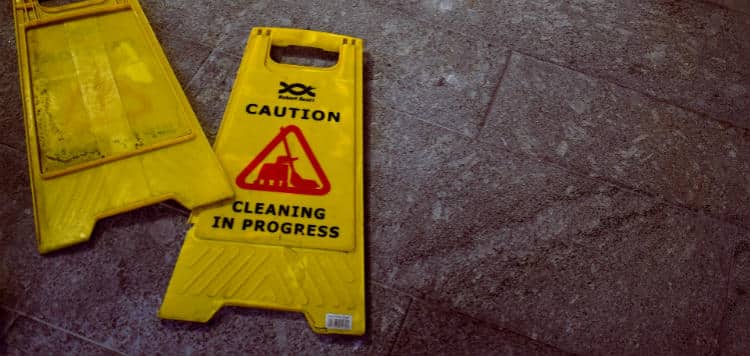Texas Woman Files Slip & Fall Lawsuit Against Dollar Tree
A Texas woman has filed suit against Dollar Tree, Inc., accusing the company of negligence in a slip and fall accident that led to severe injuries. Lavern Mitchell filed suit against the chain of dollar stores on December 3, 2018, claiming that she “slipped and fell on a puddle of a brownish foreign substance” at a Dollar Tree location in Texas City in Galveston County.
Galveston County Woman Files Slip & Fall Suit Against Dollar Tree
To secure justice in the case, the plaintiff will be required to prove by a preponderance of the evidence that Dollar Tree was negligent in maintaining the floor safety of its Texas City location. In most cases, a finding of negligence implies that the store was unnecessarily careless, risking the health and wellbeing of customers.

Evidence In A Slip & Fall Case
Civil cases generally use a legal standard of evidence known as a “preponderance of the evidence.” While criminal cases must be proved beyond a reasonable doubt, plaintiffs in civil claims need only demonstrate that at least 51% of the evidence proves their allegations. This is a lower standard, one that is easier for most plaintiffs to clear.
To prevail in court, a plaintiff in a slip and fall claim is generally required to prove that the store in question failed to address a safety hazard. In civil claims, stores are compared to similarly-situated establishments. Jurors will be asked to compare what the store in case did to what we would expect out a reasonable store under similar circumstances.
In her lawsuit, Mitchell accuses Dollar Tree of allowing her to suffer injuries by neglecting to address a spill on the floor. Further, she claims that the substance on the ground “had the consistency and overall look of dishwashing detergent.” These claims will need to be substantiated in a court of law, using evidence and legal argument.
Steps To Take
What can be used as evidence in a slip and fall claim of this nature? What can you do to protect your best interests if you happen to fall one day? Ideally, depending on the level of your injuries, you will have the presence of mind to take extensive photos of the scene directly after the fall. Securing photographic evidence can prove your side of the story, by clearly showing the substance on which you slipped. It can also be helpful to take photographs of your injures after the fall to substantiate your claims that you were harmed.
Preserving your clothes in exactly the same state as the day of the fall may also help. If you slipped and fell on a slippery substance, for example, it could help to prosecute your claim if you keep the shoes, complete with residue of the sticky substance, in a plastic bag. Your attorney may be able to use this evidence in court.
Medical Examinations
Medical evidence will also come in handy. After a serious fall, it’s best practice to proceed immediately to the nearest emergency room or your trusted doctor. Having a medical professional look over your injuries and provide a concrete diagnosis can help in court, by proving to jurors and the judge that you were injured as you say you were. Going straight to a doctor after falling down simply proves that you really hurt yourself.
Seeking medical help also goes a long way in determining the damages that you claim, because you will be compensated, if you are compensated, according to the financial losses that you have sustained. Having a clear diagnosis can help buttress your claims for damages, especially considering that many of your damage claims will involve medical expenses.
Dollar stores have popped up around the country, and while these establishments have big budgets and deep pockets, they are not above the law. America’s strong history of civil law allows injured people to pursue financial compensation after suffering injuries due to someone else’s negligence.
The Rules Of Negligence
What does negligence look like? It looks like a careless disregard for the safety of others. We expect stores to maintain appropriate cleanliness, and to remove sticky substances from the floor to keep us safe. When a store fails to do so, serious injuries may be the inevitable result.
In general, business establishments can only be held accountable for failing to address foreseeable risks, ones that any reasonable person would be able to assess and judge as posing a risk of harm. A spill on the floor obviously presents a risk that someone will slip and fall. There’s no question of that, but store managers aren’t expected to know about everything the minute it happens. Most courts therefore grant managers and employees a short grace period in which they can be notified about risks and take the appropriate steps.
Negligence filters in when managers and employees fail to address the problem within a reasonable amount of time. If for example, it was found that a Dollar Tree store had allowed a slippery substance to coat the floor of an aisle for an hour, the store could likely be held liable for any injuries that occur as a result, because an hour is far from reasonable.
